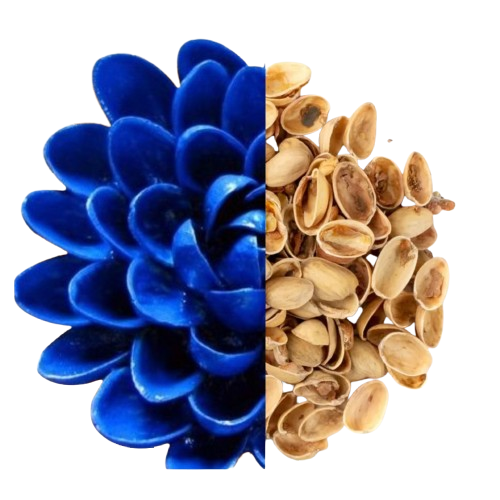
Pistachios are among the world’s most popular and nutrient-rich nuts—but what about their hard, beige shells? Typically discarded after consumption, these shells are now gaining attention for their hidden potential. Scientific research reveals that this tough outer layer holds valuable compounds, making it a promising resource for various industries.
From sustainable agriculture and eco-friendly materials to food tech, art, and even water filtration, pistachio shells are being reimagined as more than just waste. As global focus on agricultural waste recycling intensifies, more countries are exploring the diverse uses of pistachio shells—yet many remain unaware of their full capabilities.
In this article, we’ll explore both the scientific properties and practical applications of pistachio shells—demonstrating how this underestimated byproduct can add real value across a wide range of industries.
Often labeled as agricultural waste, hard pistachio shells are actually rich in valuable chemical compounds that make them highly versatile across various industries. Scientific studies have revealed that pistachio shells contain high levels of lignin, cellulose, tannins, and phenolic compounds—each contributing to their potential in agricultural, industrial, and environmental applications.
Research published in reputable journals like the Journal of Agricultural and Food Chemistry highlights the following key components found in pistachio shells:
✅ Lignin & Cellulose
These fibrous elements give pistachio shells their structural strength. They are ideal for producing activated carbon, bio-composites, and other fibrous materials.
✅ Tannins & Phenolic Acids
Known for their antioxidant and antibacterial properties, these compounds have potential uses in pharmaceuticals, cosmetics, and water purification systems.
✅ Carbon & Nitrogen
Pistachio shells contain a significant amount of organic carbon, making them excellent for composting and enhancing soil quality.
✅ Minerals (Potassium, Calcium, Magnesium, Phosphorus)
These nutrients make pistachio shells a powerful additive in organic farming, promoting healthy plant growth and soil enrichment.
Due to their unique composition, pistachio shells exhibit several properties that make them useful in eco-industrial applications:
🔹 High Water Absorption Capacity
Makes them suitable for use as moisture-retaining materials in agricultural beds and horticulture.
🔹 Strong Fibrous Structure
An ideal base for activated charcoal, biodegradable plastics, and composite materials.
🔹 Slow Decomposition Rate
Enhances their effectiveness as a soil conditioner that remains active over time without quick breakdown.
In many countries, pistachio shells are no longer seen as mere agricultural waste—they’re recognized as valuable raw materials across a range of industries. Thanks to modern technologies, companies around the globe are turning these natural byproducts into practical, eco-friendly solutions. Below are some of the most notable international uses of pistachio shells:
🔹 Why Pistachio Shells?
Their high carbon content and dense fibrous structure make pistachio shells an excellent source for producing activated carbon, which is widely used in pharmaceuticals, water purification, and air filtration.
✅ Real-World Example:
In countries like Germany and the United States, several companies use pistachio shells to manufacture advanced carbon filters, especially for removing pollutants from drinking water and food processing systems.
🔹 Nutritional Value of Pistachio Shells
With their high fiber content and beneficial minerals, pistachio shells are increasingly used in livestock feed, especially for cattle and sheep.
✅ Real-World Example:
Farmers in Turkey and Spain grind pistachio shells and add them to animal feed mixtures to boost dietary fiber and mineral intake in livestock.
🔹 Enriching Soil Naturally
Rich in minerals like potassium and calcium, pistachio shells are ideal for making organic compost and mulch. Their slow decomposition also improves soil structure over time.
✅ Real-World Example:
Farms in Italy and Australia use pistachio shells as a natural alternative to chemical fertilizers—enhancing crop yields while reducing environmental impact.
🔹 Pistachio Shells in Design and Art
In some countries, pistachio shells are used creatively in handicrafts and interior decor—thanks to their unique texture and shape.
✅ Real-World Example:
Designers in France and India craft jewelry, wall art, and decorative bowls from pistachio shells, promoting sustainable and innovative design.
🔹 Bioenergy from Agricultural Waste
Due to their energy-rich composition, pistachio shells can be converted into bio-pellets and biomass fuels, offering a clean alternative to fossil fuels.
✅ Real-World Example:
In South Korea and Canada, companies are actively using pistachio shells to produce renewable energy for industrial and residential heating systems.
As these examples show, pistachio shells are far from useless—they’re fueling innovation across the globe. By repurposing this overlooked material, countries are creating sustainable products and promoting a circular economy.
Hard pistachio shells, often discarded as agricultural waste, hold great potential in agriculture and gardening. From improving soil drainage to acting as a nutrient-rich amendment, these natural materials can enhance soil performance and increase crop productivity in a sustainable way.
One common issue in home gardens and potted plants is poor soil drainage, which can lead to root rot. Placing pistachio shells at the bottom of pots serves as a natural drainage layer, allowing excess water to flow more freely and protecting plant roots from becoming waterlogged.
🔹 Why pistachio shells?
Due to their rigid structure and slow decomposition, pistachio shells remain intact longer than many organic materials, making them an excellent long-term solution for pot drainage.
Mulching is an essential practice for moisture retention, weed suppression, and soil temperature regulation. Pistachio shells, with their fibrous texture and durability, serve as an effective organic mulch.
Additionally, adding pistachio shells to compost piles helps enrich the mix with carbon-rich material, enhancing microbial activity and releasing nutrients back into the soil over time. This not only reduces agricultural waste but also promotes healthier soil structure and fertility.
The tough texture and chemical composition of pistachio shells can help deter certain insects and garden pests. When crushed and spread around plants, they act as a natural barrier against slugs, snails, and other harmful insects.
Some studies also suggest that extracts from pistachio shells may possess antifungal and antimicrobial properties, which could contribute to plant disease prevention and natural crop protection.

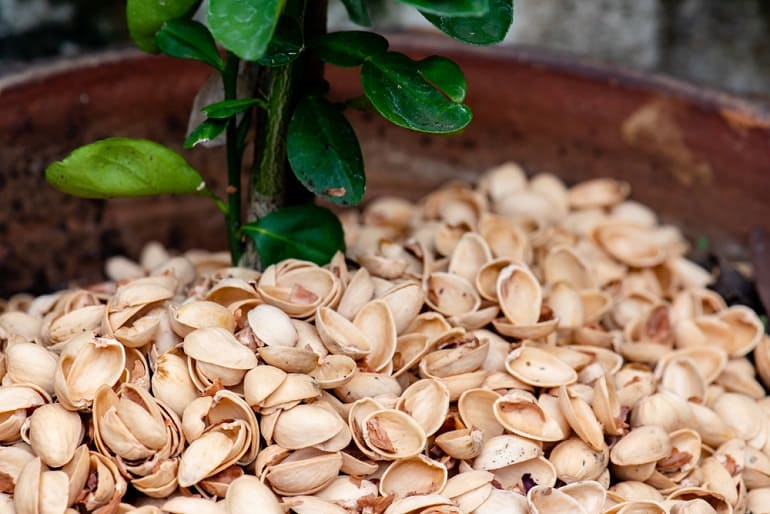
Often overlooked as agricultural waste, pistachio shells are proving to be a valuable raw material in various industrial and commercial applications. Thanks to their high carbon content, unique structure, and chemical composition, they are increasingly used in eco-conscious product development.
Pistachio shells contain a high percentage of carbon, making them ideal for producing charcoal and activated carbon.
✅ In the carbonization process, pistachio shells are heated under controlled conditions to create charcoal. This is then activated using steam or chemicals to produce activated carbon.
🔹 Applications:
🔬 Scientific research shows that activated carbon derived from pistachio shells exhibits excellent absorption capacity for heavy metals and industrial pollutants in both air and water.
✅ Pistachio shells contain volatile oils and aromatic compounds that can be extracted and used in:
Some studies suggest these extracts have relaxing and anti-stress properties, making them ideal for aromatherapy applications.
✅ Water filtration: Activated carbon made from pistachio shells is effective at removing toxic substances, chlorine, and heavy metals from drinking water.
✅ Pollutant removal: Thanks to its porous structure, pistachio shell-based carbon can filter out nitrates, phosphates, and other chemical contaminants from industrial wastewater.
✅ This provides an eco-friendly and cost-effective alternative to expensive synthetic filtration systems.
From activated charcoal to natural fragrances and eco-filters, pistachio shells are proving to be a valuable component in the creation of sustainable, low-impact industrial products. Their use not only reduces agricultural waste but also contributes to cleaner water, air, and consumer goods.
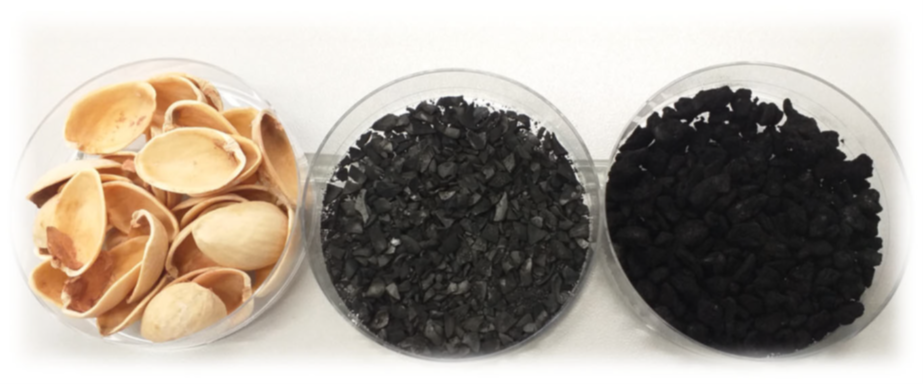
Beyond their agricultural and industrial potential, pistachio shells are gaining popularity in the world of art, design, and DIY crafts. Their unique oval shape, natural beige hue, and durable texture make them an eco-friendly and aesthetically pleasing material for creative projects.
✅ Natural elegance: The smooth, curved shape and earthy tone of pistachio shells make them ideal for crafting necklaces, earrings, bracelets, and brooches with a distinctive organic flair.
✅ High durability: With a simple waterproof coating or resin finish, these shells become long-lasting and wearable materials.
✅ A favorite among handmade accessory designers: As demand grows for sustainable fashion, many artists and small brands are turning to upcycled and biodegradable materials like pistachio shells.
🔹 Creative ideas: Combine shells with epoxy resin, natural dyes, beads, and gemstones to create one-of-a-kind, customizable accessories.
✅ Decorative wall art: Pistachio shells can be arranged into geometric patterns, mosaics, or abstract designs to create DIY wall panels, art frames, and accent pieces.
✅ Planter decoration: Covering plant pots with pistachio shells not only enhances their visual appeal but also helps retain soil moisture.
✅ Creative home elements: Use pistachio shells in handmade greeting cards, miniature sculptures, decorative bowls, and lampshades for an artistic and rustic touch.
✅ Loved by eco-conscious artists: These upcycled crafts are especially popular among those pursuing a zero-waste lifestyle or promoting sustainable design principles.
With a little imagination, pistachio shells can be transformed from agricultural byproducts into stunning jewelry, eye-catching home decor, and eco-chic craft projects. These applications not only reduce waste but also support creative sustainability and offer unique, handcrafted alternatives in the world of design.
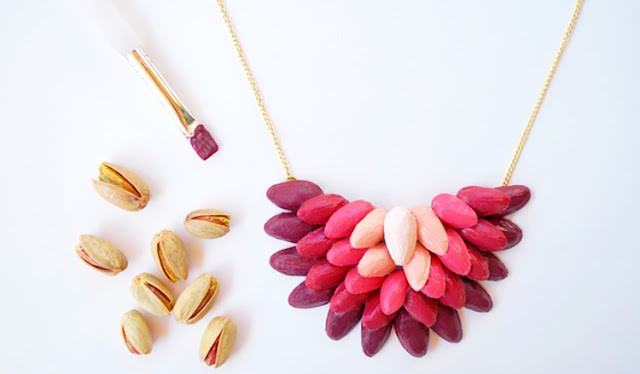

In addition to their value in industrial and artistic domains, pistachio shells offer promising potential in the animal feed industry. Rich in fiber, organic compounds, and essential minerals, these agricultural byproducts can serve as a nutritious and economical feed additive for both livestock and poultry.
✅ High in fiber and carbohydrates: Pistachio shells contain digestive fibers and complex organic matter, which aid in ruminant digestion and improve gut health.
✅ Lower feeding costs: Incorporating pistachio shells into feed formulations can reduce feed expenses, particularly in regions with high feed prices.
✅ Boost animal health and growth: Natural phenolic compounds and antioxidants in pistachio shells have shown potential in enhancing immunity and reducing digestive issues in cattle and sheep.
✅ Ideal for ruminants: Animals like cows and goats, with their fiber-friendly digestive systems, are well-suited for incorporating crushed pistachio shells into their regular diet.
✅ Greater feed variety: When ground and processed, pistachio shells can be used in poultry rations for chickens, turkeys, and ducks to diversify nutrients and improve feed efficiency.
✅ Digestive health booster: Due to their prebiotic-like properties, these shells can help enhance gut flora, leading to better egg quality, meat yield, and overall poultry performance.
✅ Mineral supplementation: Pistachio shells naturally contain potassium, calcium, and magnesium, which support bone development and metabolic functions in poultry.
🔹 Grinding and crushing: To improve digestibility, pistachio shells are often shredded or milled before being added to feed blends.
🔹 Blending with other ingredients: On many farms, they are mixed with straw, bran, or oilseed meals to enhance nutritional value.
🔹 Fermentation for bioavailability: Some research suggests that fermenting pistachio shells may improve nutrient availability and reduce anti-nutritional factors.
Utilizing pistachio shells in livestock and poultry feed offers a sustainable and cost-efficient way to reduce agricultural waste and improve animal nutrition. However, proper dosage and preparation techniques must be observed, preferably under expert guidance, to ensure optimal benefits and avoid digestive complications.
Beyond their roles in agriculture and industry, pistachio shells have found a surprising place in creative home projects and eco-friendly DIY ideas. These sturdy, uniquely shaped shells can help you bring natural charm and sustainability into your home, garden, and craft corner.
Crushed or whole pistachio shells can be used as a natural mulch or decorative layer along garden paths, driveways, or flower beds.
✅ Benefits:
Their unique oval shape and earthy tone make pistachio shells ideal for creating DIY accessories and crafts like:
✅ Creative Ideas:
You can use pistachio shells to make natural dyes for fabrics, wood, or crafts.
✅ How to extract color:
Thanks to their mild, woody scent, pistachio shells can be used in homemade candles and natural air fresheners.
✅ Ideas to try:
What might seem like kitchen waste can actually become a creative treasure. From decorating your garden to crafting eco-friendly gifts, pistachio shells offer a low-waste, budget-friendly alternative for sustainable living.
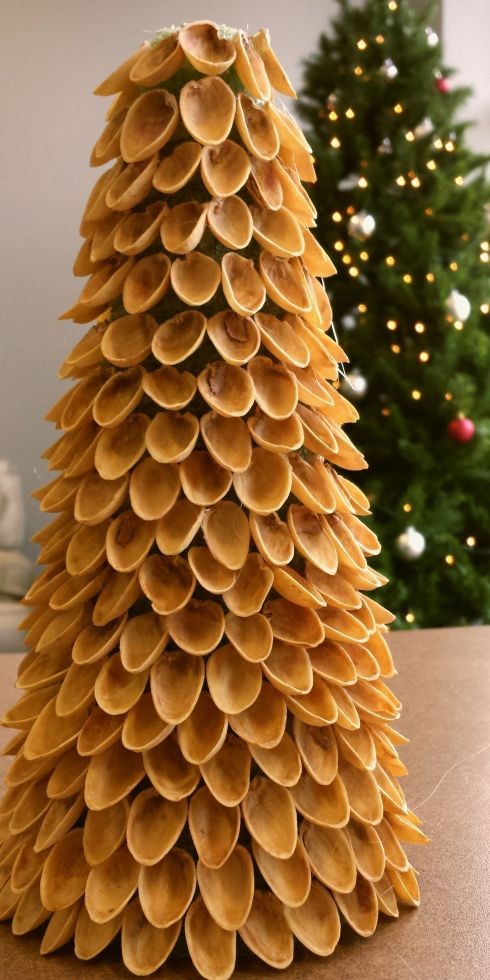
Pistachio shells, often regarded as agricultural waste, in fact hold extensive potential across agriculture, industry, environmental sustainability, and the arts. From soil improvement and animal feed to water purification and charcoal production, this valuable byproduct can serve diverse sectors efficiently.
At NutsGrove, we utilize scientific knowledge and practical expertise to transform pistachio shells into sustainable, cost-effective products for various industries. If you’re looking for a reliable, eco-friendly supply of high-quality pistachio shells for your business, check out our pistachio shell supply section to place your order.
At NutsGrove, we offer premium-grade pistachio shells tailored for agricultural, livestock feed, and industrial applications.
🔹 Available Varieties:
📦 For bulk orders, get in touch with our sales experts.